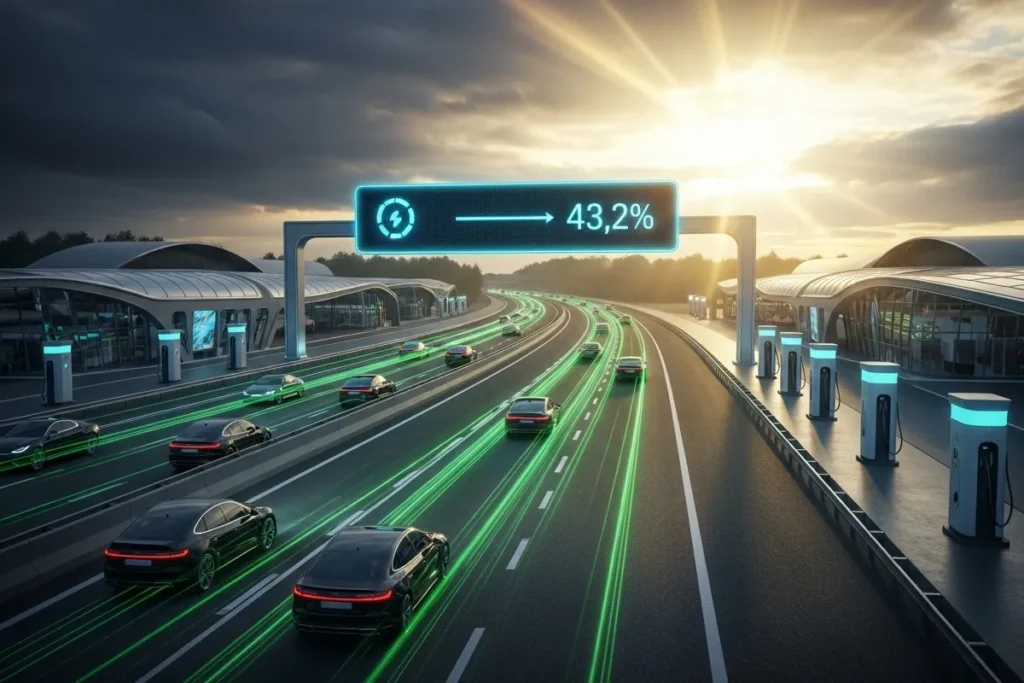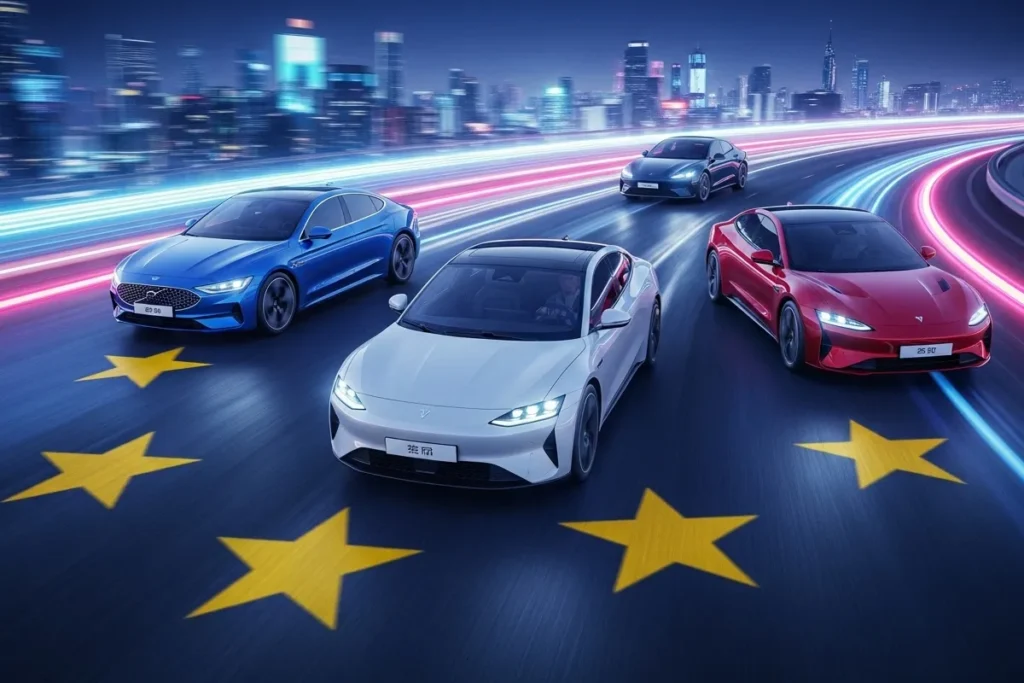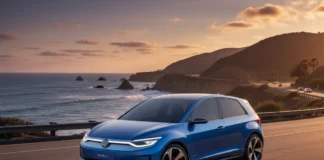In the first half of Electric Vehicle Registrations in Europe 2025, Europe’s electric-vehicle market jolted back to life—propelled by Germany’s staggering 43.2 percent surge in registrations and a continent-wide share that climbed to 15.4 percent (ACEA). After a period of incentive roll-backs, supply bottlenecks and cautious buyers, both policymakers and automakers find themselves racing to capitalize on renewed momentum.
This article first charts the broader European recovery, then dives into Germany’s incentive-driven comeback and the industry’s agile response. Next, we contrast national winners and laggards, before mapping out the EU’s 2030 targets and the infrastructure investments that will underpin future growth. We then unpack shifting production footprints, battery-supply pressures and the three-way battle among legacy OEMs, startups and Chinese rivals. Finally, we forecast H2 2025 trajectories, weigh looming headwinds and highlight opportunities in the second-hand market and next-gen launches—offering a comprehensive, data-driven guide to Europe’s EV renaissance.
Table of Contents
Europe’s EV Market on the Mend
After a lull in late 2023 and early 2024—when stretched supply chains, incentive roll-backs and hesitant buyers slowed growth—Europe’s electric vehicle sector has regained momentum. In the first half of 2025, new registrations climbed sharply, lifting EV share of total passenger-car sales to 15.4%. This rebound underscores a broader shift in consumer confidence and industry readiness as stakeholders clear the bottlenecks that once stalled progress.
Across Western Europe, market activity has rebounded on three fronts. First, automakers have resolved semiconductor shortages and freight bottlenecks, allowing production to match growing demand. Second, national and regional incentive schemes—whether in the form of purchase grants, lower taxes or fleet subsidies—have been recalibrated to attract businesses and private buyers alike. Third, consumer sentiment has been buoyed by an expanding charging infrastructure; rapid roll-outs of high-power public chargers and improved home-charging options have erased much of the “range anxiety” that once deterred mainstream adoption.
Yet this recovery is far from uniform. Germany, with a 43.2% surge in EV registrations, sits at the forefront of the upswing. Its swift decision to reintroduce generous tax incentives for corporate fleets and simplified rebate processes has yielded outsized results. By contrast, France has seen a modest downturn as its bonus-malus scheme lost steam and budget constraints delayed new funding rounds. Mid-tier markets such as Italy and Spain report moderate growth—hovering around 10–20% increases—reflecting a patchwork of regional policies and slower charger network expansions. Northern Europe continues to lead in per-capita EV penetration, while emerging markets in Eastern Europe trail due to gaps in both incentives and infrastructure.
This uneven landscape sets the stage for Germany’s outsized influence. As the continent’s largest auto market, Germany’s rapid rebound not only raises the European average but also signals to policymakers and OEMs where to focus resources. The next sections will drill down into Germany’s policy maneuvers, industry responses and the wider competitive dynamics reshaping Europe’s electric-mobility renaissance.
The German Comeback: Incentives and Industry Response
Germany’s EV resurgence is anchored in a swift policy pivot. In January 2025, Berlin reintroduced a generous corporate tax allowance—effectively writing off up to €9,000 per electric vehicle as a business expense. At the same time, benefit-in-kind valuations for company cars dropped from 1 percent to 0.5 percent of list price monthly, slashing tax bills for executives who switch to EVs. These measures have made electrified fleets an irresistible proposition for mid- and large-sized firms, effectively turning the country’s 830,000-vehicle corporate parc into an electrification testbed.
Behind the headline 43.2 percent jump in overall EV registrations lies a bifurcated recovery between fleets and private buyers. Between January and June, corporate registrations surged roughly 60 percent year-on-year, versus a 30 percent rise in purely private purchases. The fleet boom has propelled models such as Volkswagen’s ID.4 and the Tesla Model Y to the top of German sales charts, with Mercedes-Benz’s EQB and BMW’s iX also climbing through the ranks as firms look for variety in range, cargo capacity and total cost of ownership.
Automakers and dealers have raced to satisfy this pent-up demand. Volkswagen Group has shifted two additional production lines at its Zwickau plant entirely to EV output, targeting a 25 percent increase in volumes by year’s end. Mercedes-Benz is expanding its Sindelfingen battery-assembly hall to feed both European and export markets, while BMW is fast-tracking software updates for its newest i4 and iX models to cut delivery lead times. Dealers, meanwhile, are leaning into flexible leasing terms, subsidized home-charger installations and “try-before-you-buy” weekend demos, knowing that reducing the friction of first-time EV ownership can turn curiosity into conversion.
These combined efforts—policy incentives, model availability and dealer creativity—have created a virtuous cycle. As fleets electrify en masse, charging infrastructure and after-sales expertise scale in tandem, lowering barriers for Germany’s private motorists and reinforcing the market’s unexpected yet data-driven rebound.

Policy Landscape and Infrastructure Investments
The European Union has set an ambitious target of deploying 30 million electric vehicles on its roads by 2030—nearly six times the current 5.3 million registrations—under its “Fit for 55” climate package. To underpin this, the EU’s CO₂ standards mandate a 55 percent reduction for new cars by 2030 and 100 percent zero-emission sales by 2035, with an interim 15 percent cut by 2025.
National transpositions of the Alternative Fuels Infrastructure Regulation (AFIR) require core TEN-T corridors to host a charging station every 60 km by 2025 and every 100 km on the comprehensive network by 2030. Many member states have paired these rules with public-private partnerships: Germany’s autobahn electrification funds and France’s regional co-funding schemes are prime examples of coordinated roll-outs.
Scaling the charging network remains a cornerstone. The European Commission’s Green Deal projected a jump from 200,000 public chargers in 2020 to at least 1 million by 2025, supported by European Investment Bank loans and InvestEU guarantees. Major Charge Point Operators like Ionity and Fastned are installing ultra-rapid hubs, and EU-backed grants are underwriting 1,400 new chargers—including 430 truck-focused stations—along principal freight routes.
Yet regulatory risks loom. Grid constraints and protracted connection approvals have delayed roll-outs, with Fastned citing network reinforcement bottlenecks in Northern Ireland as a critical hurdle. Equally, incentive sunset clauses threaten to undercut demand: several purchase-grant schemes across Italy and Spain expire in late 2025, and Germany’s corporate tax allowances for EV fleets are slated for a 2026 review. If member states fail to extend or replace these measures in time, the industry could face a policy-induced downturn just as infrastructure gains traction.
Maintaining this delicate balance between ambitious targets, sustained funding and regulatory stability will determine whether Europe can transform its short-term EV surge into a long-term mobility revolution.
Industry Implications and Competitive Dynamics
Automakers are realigning production footprints to match shifting EV demand and meet tightening CO₂ targets. Volkswagen has already earmarked additional lines in Zwickau and Bratislava for battery-electric models, while BMW’s €800 million plant expansion in Mexico adds capacity for its Neue Klasse platform. Global forecasts point to a 25 percent jump in EV sales to roughly 22 million units in 2025, with Europe accounting for about 17 percent of that volume. To hit mid-decade emissions goals, legacy OEMs are accelerating platform consolidation, yet many have trimmed overall output forecasts amid economic headwinds.
Meanwhile, rising battery demand is colliding with supply-chain fragilities. EV battery installations surpassed 950 GWh in 2024—up 25 percent year-on-year—but growth is heavily skewed toward China, which controls close to 60 percent of global battery demand and raw-material processing. A World Economic Forum study warns that lithium and cobalt sourcing remain chokepoints, with single-supplier risks and geopolitically fraught mining regions threatening timely deliveries. These pressures are driving OEMs and battery suppliers to deepen partnerships, invest in recycling initiatives and explore alternative chemistries, but the scale-up challenge remains acute.
Competitive dynamics are intensifying across three fronts. Established European brands face mounting pressure from lean startups—like Polestar and Rivian—that boast nimble software stacks and direct-to-consumer sales. At the same time, Chinese automakers such as BYD and Geely are leveraging deep vertical integration to undercut prices and accelerate model cycles; many can launch a new EV in as little as 18 months, compared to four to five years for Western incumbents. Reflecting this anxiety, 70 percent of global OEM executives surveyed cite Chinese competition as their top concern for 2025, fearing margin erosion and market-share losses.
In sum, Europe’s revitalized EV market has reignited industry investment, but automakers must navigate production realignments, battery-chain risks and a three-way scramble among legacy giants, agile newcomers and cost-competitive Chinese entrants to secure long-term growth.

Forecasts and Roadblocks Ahead
Under a scenario where generous incentives remain in place through H2 2025, Europe’s EV registrations could climb by 12–15 percent year-on-year, delivering roughly 3.5 million new EVs and lifting market share toward 25 percent. Conversely, if several national purchase grants and tax breaks lapse as scheduled, growth may stall at low single digits—EV Volumes now projects overall light-vehicle registrations rising just 0.65 percent in Western and Central Europe in 2025, down from earlier forecasts of 2.6 percent. The International Energy Agency expects Europe’s zero-emission share to reach about 25 percent of new-car sales this year, underscoring how much hinges on policy continuity.
Several headwinds threaten to trim these tails. Rising inflation and energy costs have already forced central banks to lift interest rates, dampening consumer willingness to finance new vehicles; Autovista24 links this to softer delivery forecasts for both ICE and EV models. Raw-material price inflation—particularly for lithium and cobalt—remains acute, squeezing OEM margins and risking production slowdowns if suppliers can’t secure long-term contracts. Consumer sentiment is likewise fragile: ACEA reports a 1.9 percent decline in total EU car registrations through Q1 2025, reflecting broader economic uncertainty that could bleed into EV uptake even as battery-electric share edges up to 15.2 percent.
Yet emergent opportunities could mitigate these risks. The second-hand EV market is poised for rapid expansion: roughly 123,000 off-lease EVs will hit Europe’s used-car lots in 2025 alone—a volume set to more than double by 2026 and swell to over 650,000 by 2027—offering more affordable options and bolstering resale values. On the new-model front, OEMs plan over 50 next-generation electric launches across Europe in H2 2025, from streamlined mass-market hatchbacks to flagship SUVs with 600 km+ ranges. If manufacturers and policymakers coordinate these waves—aligning fresh incentives with robust resale pipelines—they can turn a precarious outlook into sustained momentum.
Conclusion
In H1 2025, Europe’s EV market roared back to life, propelled by Germany’s 43.2 percent surge in registrations and a continent-wide share rising to 15.4 percent. Yet this upswing masks stark contrasts—from France’s slipping numbers to the Nordics’ electric dominance and nascent uptake in Eastern Europe. Ambitious EU targets and AFIR-driven charging mandates have set the policy backdrop, while automakers have realigned production, navigated battery-supply pressures and squared off against agile startups and competitive Chinese entrants. Looking into H2, sustained incentives could lift registrations by 12–15 percent, whereas lapsed grants and rising costs threaten to stall growth.
To cement this revival, governments must renew or replace expiring subsidies, fast-track grid upgrades and nurture the burgeoning second-hand market. Simultaneously, OEMs and investors should deepen partnerships across the value chain and prepare next-generation models for mass adoption. Only through coordinated policy, infrastructure investment and industry collaboration can Europe turn this temporary spike into a permanent, decarbonized mobility revolution.





